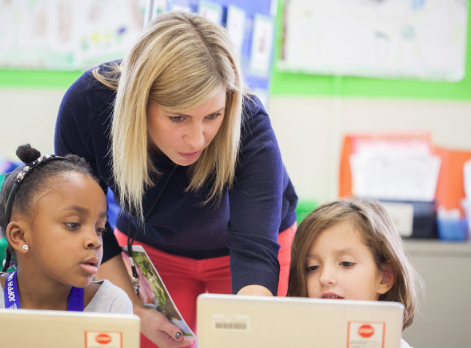Empowering students means equipping them with the skills, confidence, and ownership to take charge of their educational journey. Personalized learning supports this empowerment by centering instruction around each learner’s needs, goals, and strengths. Through meaningful choice, flexible pathways, and ongoing support, personalized learning transforms students into active participants in their learning process.
Fostering Student Agency
Personalized learning begins with recognizing that students are capable decision-makers. When given opportunities to choose how and what they learn, students develop agency—the ability to make intentional choices about their learning. This can be achieved by:
- Allowing students to select topics or formats for assignments
- Encouraging them to set academic and personal goals
- Involving them in designing their learning plans
As students take more responsibility, they grow more confident and engaged.
Encouraging Goal-Setting and Self-Reflection
Empowered learners are aware of their progress and motivated by their goals. Personalized learning supports this by helping students:
- Establish short-term and long-term learning objectives
- Track their own progress through portfolios or learning dashboards
- Reflect on successes and challenges regularly
These habits foster self-awareness, critical thinking, and resilience.
Providing Flexible Learning Paths
Traditional models often expect all students to learn the same material in the same way and at the same pace. Personalized learning empowers students by:
- Adapting content and instruction to individual learning styles and readiness levels
- Allowing varied pacing so students can revisit or accelerate as needed
- Offering diverse resources and formats for accessing information
This flexibility ensures that all learners have the tools they need to succeed in their own way.
Supporting Student Voice and Choice
Empowering students means listening to their perspectives and honoring their preferences. Personalized learning creates opportunities for students to:
- Share their opinions about classroom activities
- Choose how they demonstrate understanding (e.g., through writing, presentations, videos, or projects)
- Participate in decision-making about classroom routines and policies
Student voice builds a sense of ownership and fosters a positive, inclusive learning environment.
Building Strong Teacher-Student Relationships
Empowerment is strengthened by relationships built on trust and support. In personalized learning settings, teachers act as mentors and coaches, guiding students along their individual paths. Regular check-ins, feedback, and encouragement help students:
- Feel valued and supported
- Ask for help when needed
- Take academic risks and grow through challenges
Using Technology as a Tool, Not a Replacement
Digital platforms can enhance empowerment by:
- Allowing students to access materials anytime and anywhere
- Offering real-time feedback and progress monitoring
- Supporting independent learning through interactive tools
However, technology should complement—not replace—human connection and thoughtful instruction.
Conclusion
Empowering students through personalized learning means creating conditions where learners feel capable, motivated, and in control of their education. By supporting student agency, offering flexible paths, and encouraging meaningful reflection, educators can help students become confident, self-directed learners prepared for success in school and beyond. Personalized learning isn’t just a method—it’s a mindset that puts students at the center of everything we do.













